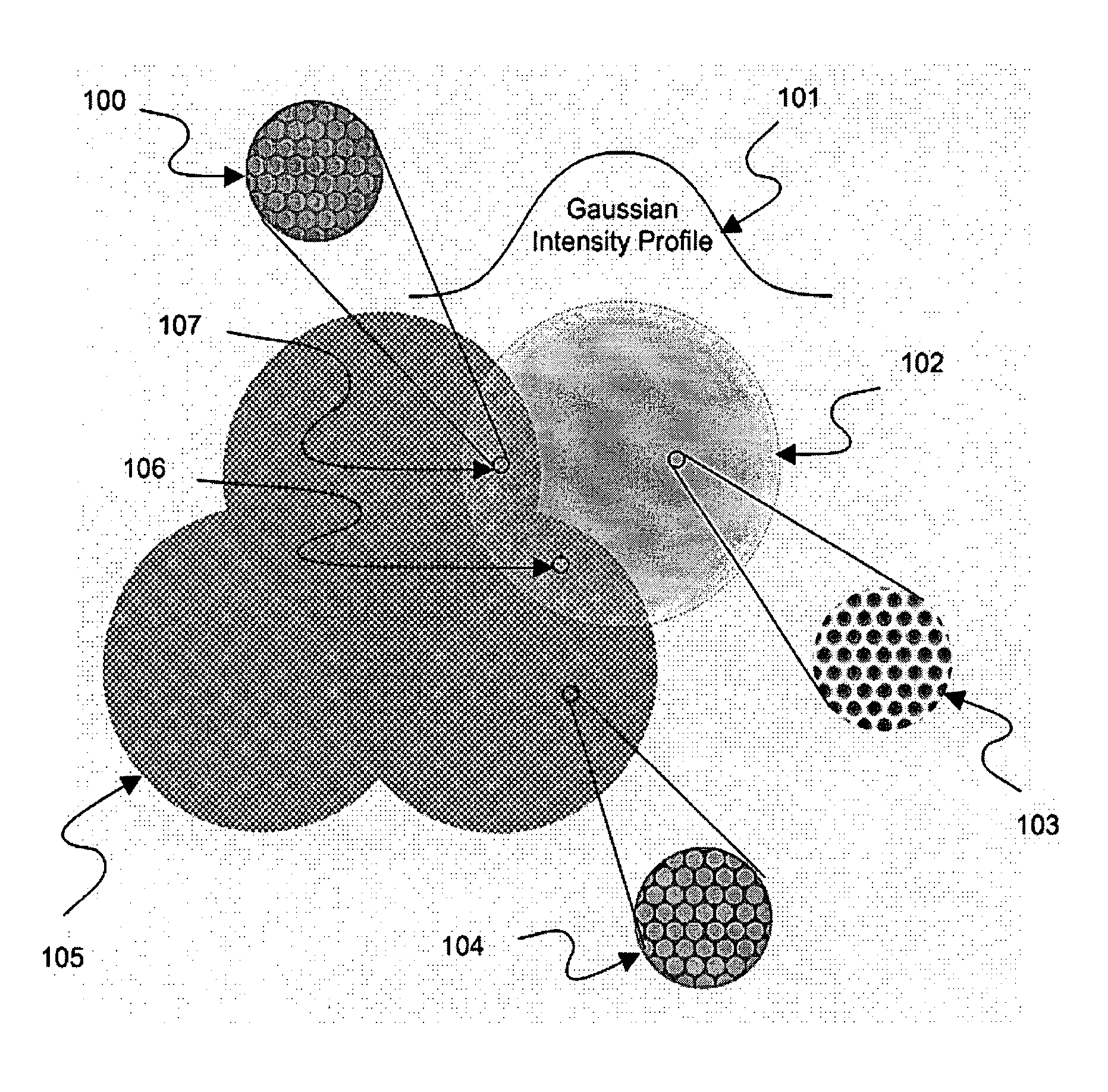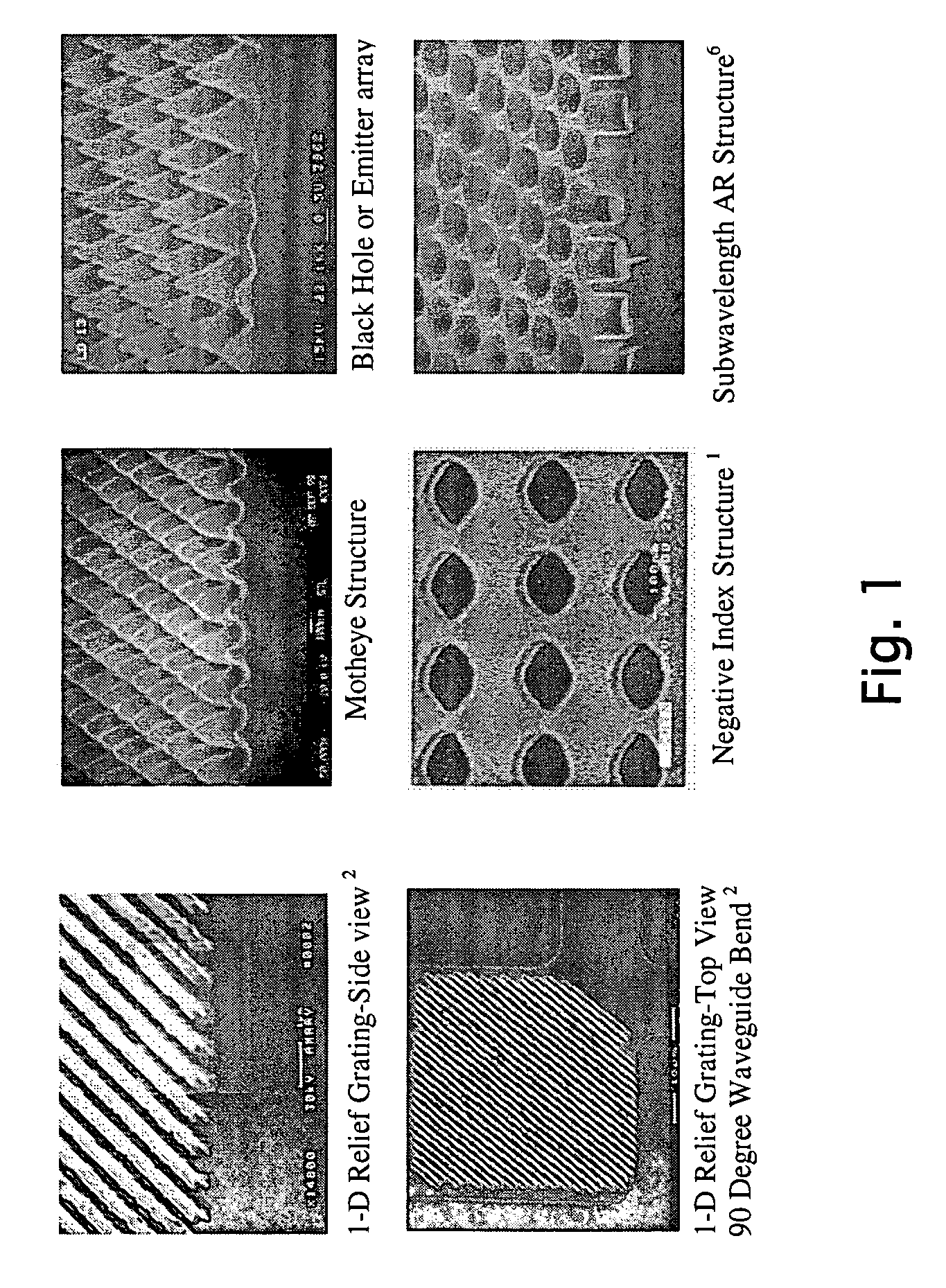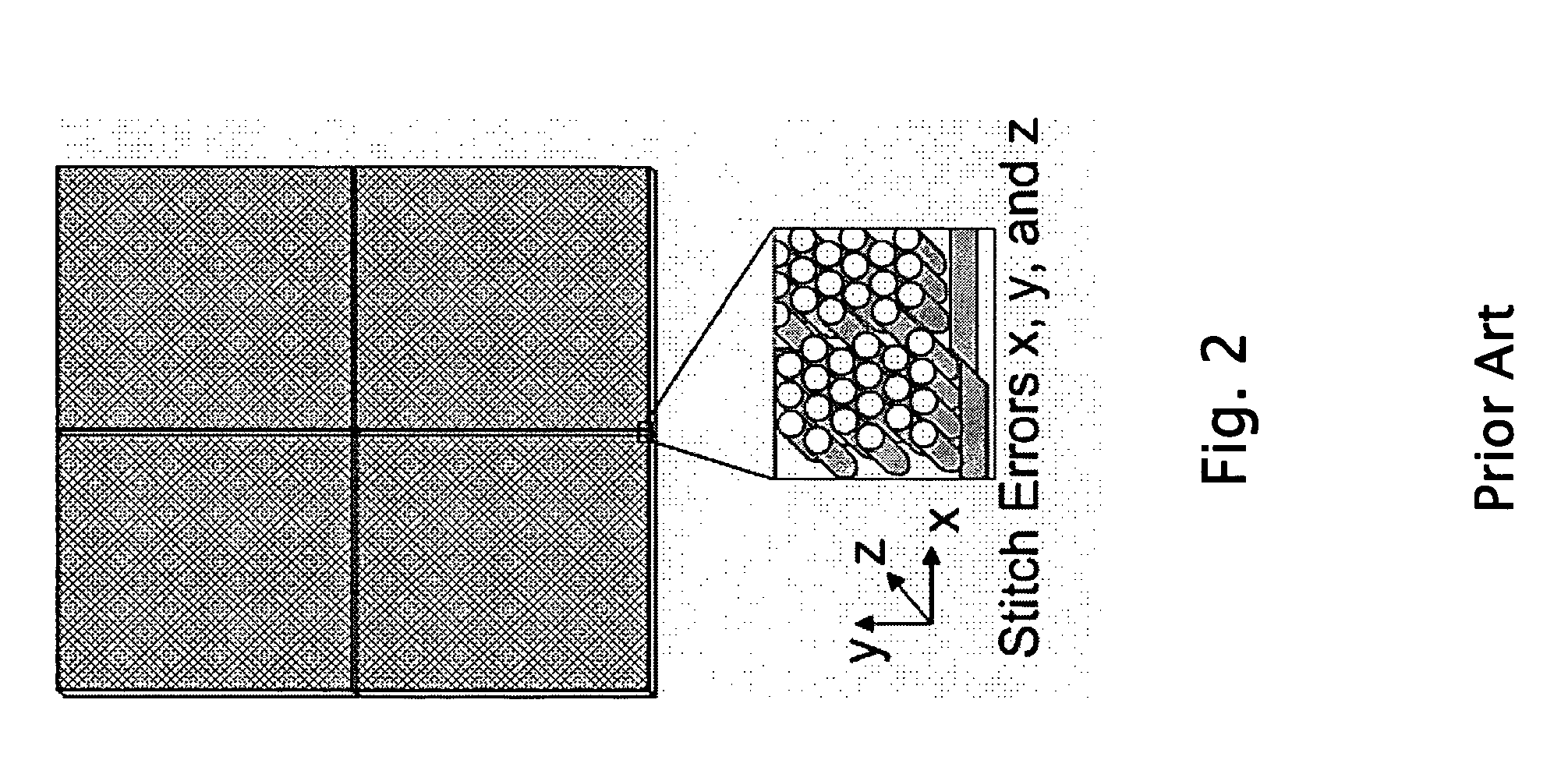Seamless stitching of patterns formed by interference lithography
a technology of interference lithography and pattern stitching, applied in photographic processes, radiation therapy, therapy, etc., can solve the problems of limited use of coherent pattern sizes, practical limitations, and barriers to commercial application of these nanotechnologies, and achieve the effect of high-speed optical modulation
- Summary
- Abstract
- Description
- Claims
- Application Information
AI Technical Summary
Benefits of technology
Problems solved by technology
Method used
Image
Examples
Embodiment Construction
[0025]The current invention pertains to a novel, simple, and cost effective method to seamlessly tile and stitch regular surface textures, such as those with periodic nanometer scale features, at the exposure level of the fabrication process. An example of exposure level tile stitching of patterns in accordance with an exemplary embodiment of the present invention is shown in FIG. 4. Exposure pattern 102 may be generated by any of a number of ways, such as through interference by a plurality of monochromatic beams. Post exposures 105 represent impression of base pattern 102 at a plurality of partially overlapping tiled positions. The impression is manifested in the form of a transmission mask, or some other permanent or semi-permanent effect in the surface being exposed that can be used to register the post exposure pattern fine position relative to the new exposure pattern 102 position. Corresponding zoom view details are shown for base pattern 103 and for post-exposures 104, and f...
PUM
| Property | Measurement | Unit |
|---|---|---|
| diameter | aaaaa | aaaaa |
| diameter | aaaaa | aaaaa |
| diameter | aaaaa | aaaaa |
Abstract
Description
Claims
Application Information
 Login to View More
Login to View More - R&D
- Intellectual Property
- Life Sciences
- Materials
- Tech Scout
- Unparalleled Data Quality
- Higher Quality Content
- 60% Fewer Hallucinations
Browse by: Latest US Patents, China's latest patents, Technical Efficacy Thesaurus, Application Domain, Technology Topic, Popular Technical Reports.
© 2025 PatSnap. All rights reserved.Legal|Privacy policy|Modern Slavery Act Transparency Statement|Sitemap|About US| Contact US: help@patsnap.com



